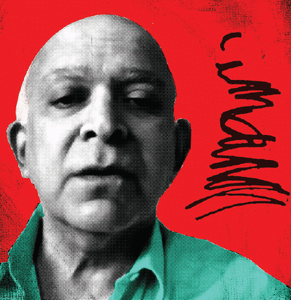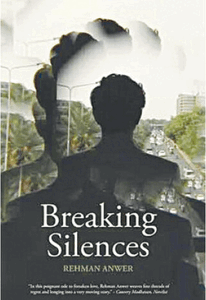
Badar Abro, author of Ranikot: The Wall of Sindh, is without a doubt the one individual who has seen every inch of the Rannikot Fort. And he has seen, nay, observed it with a critical and learned eye. From his first trip out to this great monument in 1985, he has never been there as a tourist; he has always been a researcher. With remarkable and dogged commitment, he has returned repeatedly to that harsh environment. That alone is an achievement and some. He is therefore well equipped to write on Rannikot.
The book, so grossly mistitled Ranikot, is a beautiful presentation with scores of first-class ground level and drone images and maps. The latter are a great help to elucidate the layout of this spectacular fort. I have long held that Sindhis are a people who have a strong umbilical cord harnessing them to their dharti [land], so the corruption of a place name by a true Sindhi is therefore not just jarring, but heartbreaking for me.
The fort has always been Rannikot — the spelling I will follow in this review — named after the Nai [rivulet] Ranni that flows through it from west to east. It has also, at some rare times, been referred to as Roonikot (the ‘n’ being palatal here), but in the past 40 years since I have been going there, never as Ranikot — Fort of the Rani. It goes to Abro’s discredit that, while quoting earlier writers he has, on a couple of occasions, altered the name from Rannikot or Ranna to Ranikot. This is not just negligence. It is a criminal act, all right for a novice travel writer but certainly not acceptable from an intellectual producing a scholarly work.
One may not agree with the author’s treatise about its origins, but the superb photography and historical context make this book a treat
It seems there is an insidious move to alter history. The signboards pointing out Rannikot on the Indus Highway outside Sann bear the misspelling of Ranikot. There are other signs, too, inside the fort, all similarly misleading. They have all been erected by the Endowment Fund Trust for Preservation of the Heritage of Sindh, which has now published this work.
That having been said, this work is rather a tour de force of Sindhi history and, for the armchair traveller, an introduction to the various other forts situated across the province. The reader also gets a peek at some forts and defensive walls abroad. For the uninitiated reader of Sindhi history, this is a landmark work to introduce them to further reading.
Abro is convinced that Rannikot is the ancient Nerunkot. He rejects the accepted precept that Hyderabad stands upon the foundations of Nerunkot of which we frequently hear since the time it was taken by the Arabs in the year 711. Liberally quoting from Mirza Kalich Beg’s English translation of the Chachnama, the writer draws his conclusions: first, that Nerunkot was a Buddhist majority city — which it was, as indeed, was much of the rest of Sindh. Having found potsherds “from Buddhist times” along the Ranni stream inside the fort, he argues in favour of his treatise.

To strengthen his theory, Abro relies on the distances between various places as given by Arab geographers and historians. He tells us that the distance between Debal (the ruins of Bhambore near Gharo) and Nerunkot being 25 farsakhs — equalling 150 kilometres — brings us to Rannikot. Here, however, he is in error. The farsakh equals just under 5km and the given distance would bring us to Hyderabad rather than elsewhere.
Abro does not take into account the descriptions of two important geographers of the 10th century, namely Istakhri and Ibn Haukal. Both tell us that Nerun lay between Debal and Mansura (Brahmanabad in modern Sanghar district), but nearer to the latter. Also, the geographer Abul Fida writes that the distance between Mansura and Nerunkot is 15 farsakhs, or 75km. This is the exact distance in a straight line between Hyderabad and the ruins of Brahmanabad or Mansura. Rannikot, on the other hand, sits some 170km from Brahmanabad.
Before we go on, it is best to understand that the Chachnama, now available in Sindhi, Urdu and English, was originally an Arabic diary. It was written by a member of Mohammad bin Qasim’s army who, being of the Saqifi tribe, was related to Bin Qasim. In the 13th century, the Arabic was translated into Persian by Ali bin Hamid of Kufa.

While the original was lost over time, the Persian version — which was used by the learned Mirza Kalich Beg for his English translation — is still extant.
Now, the Chachnama very categorically tells us that after the fall of Debal, Bin Qasim “ordered the battering rams to be put in boats and taken to the fort of Nerun.” The boat journey from Debal, the famous port of Sindh from the middle of the second millennium BCE, would have entailed a short coasting sail and then up the nearest of the several arms of the Indus in the delta. From the deltaic branch, the fleet would have gone into a major arm of the river and fetched up under the walls of Nerunkot or Hyderabad where the river runs to this day. It needs to be noted that there is no riverine connection between Debal and Rannikot.
Nor, too, is there any description of hauling heavy siege equipment across the desert between Debal and Rannikot. Here we have Jaubat Salmi, the ballista [a projectile weapon somewhat like a mix between a catapult and crossbow] champion who had earlier knocked down the flagpole of Debal, telling us that the distance from Debal to Nerunkot was “about 25 leagues.” A league being 5.5km, this comes to about 135km. In order to keep water at hand, the army would not have marched in a straight line, but along the river. In which case, this would be the distance between the two towns. To Rannikot, if we believe that to be Nerun, the distance from Debal (Bhambore) is about 190km.
According to the measurements of those who took part in the invasion and the Arab historians who came two centuries after them, there is no way we can conclude that Rannikot is the ancient Nerun. However, where one cannot quarrel with Abro is his estimation of the great age of the fortification. He takes immense pains to explore the farthest reaches of the fort and photograph decaying portions that reveal several layers of repair and upgradation. Clearly, the original wall — built perhaps 2,000 years ago — was a mud, brick and clay structure that was added to over the centuries.
One may not agree with Abro’s treatise, but he does tantalise with his scholarship. He raises some essential issues and, above all, brings Rannikot into focus. The fort is a priceless piece of Sindhi heritage and needs immediate notice and care.
With some reservation I say that this book is a treat on two accounts: the superb photography and the comprehensive historical background. My reservation is of course that, because of the incorrect naming of Rannikot, it has altered one little piece of Sindhi geography and history by corrupting the name.
The reviewer is a Fellow of the Royal Geographical Society and author of nine books on travel
Ranikot: the Wall of Sindh
By Badar Abro
Endowment Fund Trust for Preservation of
the Heritage of Sindh, Karachi
ISBN: 978-9699860164
321pp.
Published in Dawn, Books & Authors, October 6th, 2019


































